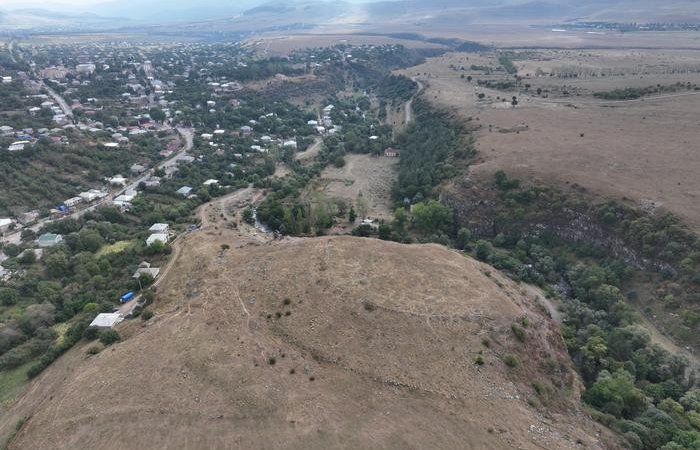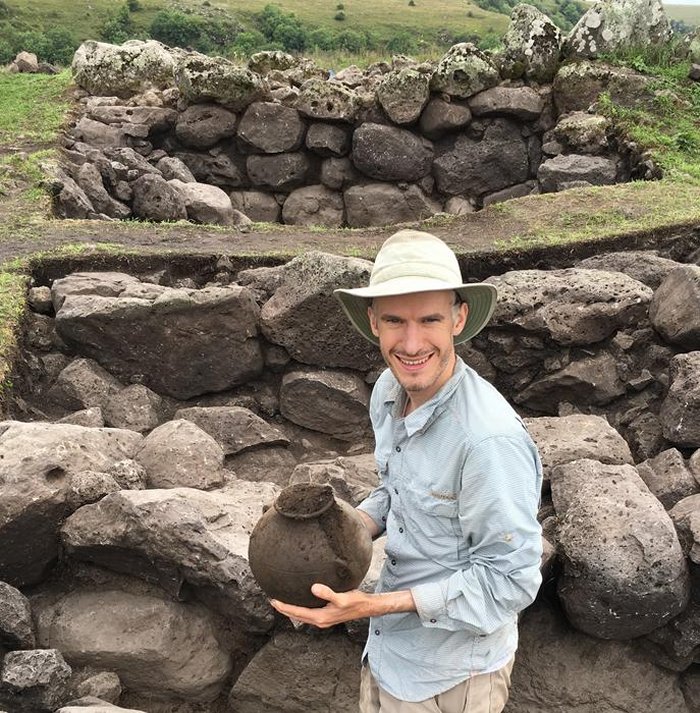Conny Waters – AncientPages.com – Scientists excavating a fortress site in southern Georgia aim to uncover why communities in this area were more resilient than in other parts of the world at the end of the Bronze Age – a period of significant change, around 1,200 B.C.

Excavation site. Credit: Cranfield University
The project – Surviving the Crisis Years: The Foundations of Societal Resilience in the Caucasus at the End of the Bronze Age – has received a Gerda Henkel Grant of €132,308 and will begin in June 2023. The project is led by Dr Nathaniel Erb-Satullo, Lecturer in Archaeological Science at Cranfield University, in collaboration with Dimitri Jachvliani, an archaeologist from the Georgian National Museum in Tbilisi. Cranfield osteoarchaeologist Dr Nivien Speith, and a wide range of specialist partners from Cornell University, the University of Pennsylvania, and the University of Oxford will also join the project.
Fortress settlement will give clues to community resilience
During the so-called ‘12th Century BC crisis’ and its aftermath, most areas of the Middle East experienced a period of huge disruption with the collapse of empires, famine, failed harvests, warfare, and migration. The Caucasus (present-day Georgia, Armenia, and Azerbaijan) seem, by contrast, to have been insulated from this chaos, displaying only gradual change in material culture and settlement patterns. Either the region escaped the wider disruption entirely, or it did not have the same cultural, economic, and political impact on communities in the area – implying they were perhaps more resilient than other areas.
Dr Erb-Satullo commented: “The key to understanding why the Bronze Age-Iron Age transition is different in the Caucasus is to study the fortress communities that dot the landscape during this period. We’re looking for clues about life in the Late Bronze Age through examining areas such as ceramics, burial rituals, farming practices, tools and social structures.
“Given the upheaval at that time in other nearby regions, we are intrigued to find out more about one of these sites and determine what underlies their apparent resilience.”
Specialist team will be joined by local experts and residents
The fortress site, called Dmanisis Gora, is based in the Kvemo Kartli region of Georgia and an international team of up to 30 people will work to excavate the site. The team includes Cranfield students and graduates, Georgian archaeologists, and specialists from a number of UK and US universities. Local residents from the modern town nearby the site will also ᴀssist in excavation.

Dr. Nathaniel Erb-Satullo, Lecturer in Archaeological Science at Cranfield University. Credit: Dr Nathaniel Erb-Satullo
The project builds on initial pilot excavations at the site conducted before the pandemic, as well as a comprehensive drone-based pH๏τogrammetric survey conducted in Autumn 2022 and will continue existing research on the topic. It will be using the latest forensic technologies including isotopic analysis of animal remains, metallurgy, magnetometry and deploying drones to scan the area.
See also: More Archaeology News
“What’s really exciting about this site is its size, preservation, and the fact that it has layers dating precisely to the years around the 12th Century BC crisis,” continued Dr Erb-Satullo. “Many fortresses are on hills which are prone to erosion. But this one has relatively flat topography, so the sediment will have built up in layers over time, helping to preserve artefacts and archaeological clues from the Late Bronze Age.”
Written by Conny Waters – AncientPages.com Staff Writer





